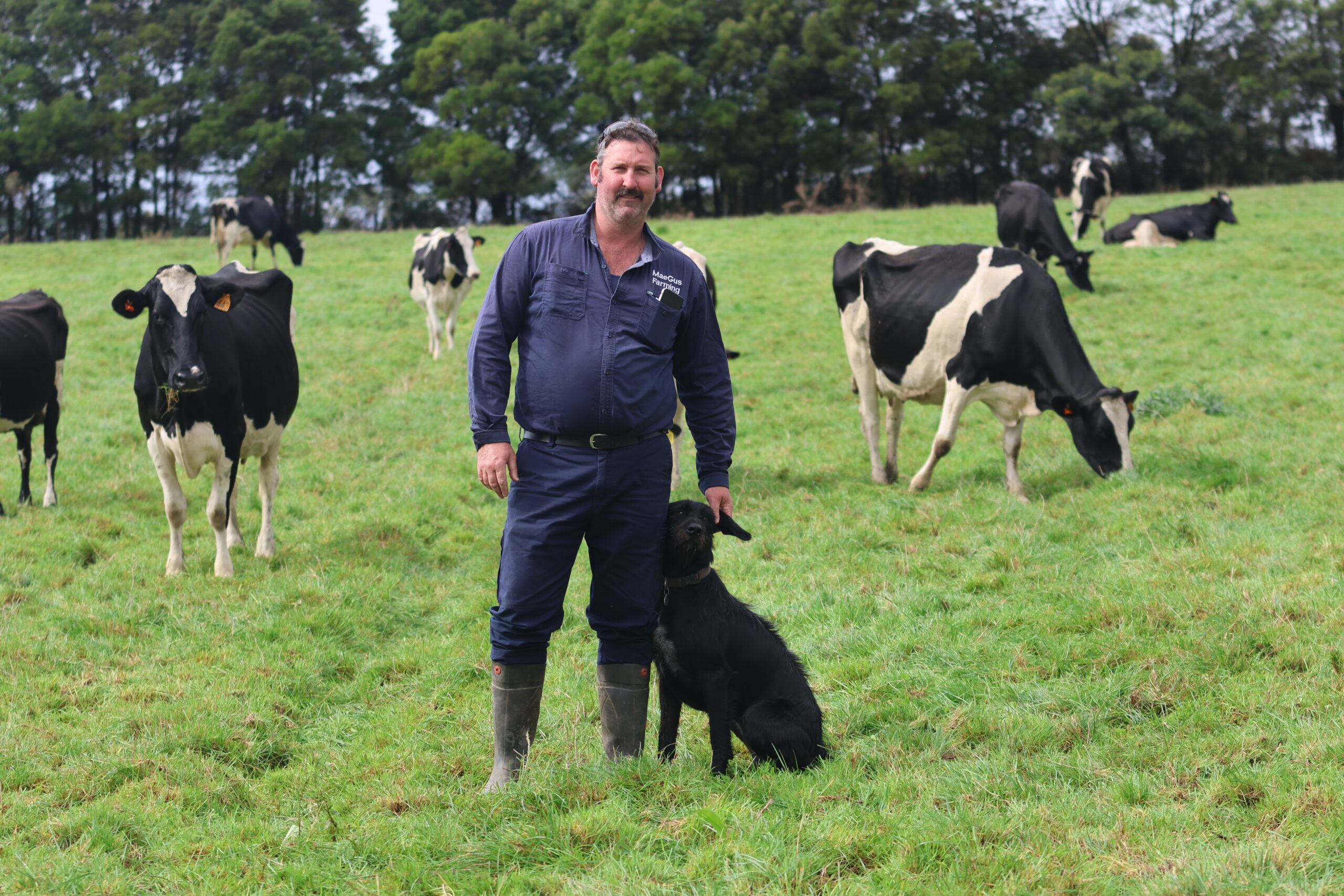Wines family breed for efficient animals
Wines family
Region: South-West Victoria
Topic: Boosting a herd’s average BPI
Milking better cows – not more cows – is the motto of south-west Victorian dairy farmers Kevin and Claire Wines. It’s also setting them up for a transition to robotic milking.
The couple, along with their children Kora and Korbin, milk 210 predominantly Holsteins in the notoriously wet conditions at Ecklin South.
Improving their herd through genomic testing and breeding with quality bulls has enabled them to cap their cow numbers, avoid damaging wet paddocks, and deliver as much income as milking up to 240 cows.

Kevin Vines aims to breed more efficient cows so that he can achieve the same production from fewer cows.
“When we first got to this farm in June 2010, within two years we were able to get the herd down to 210 cows producing the same solids as the 240 previously,” Kevin explained. “This was a result of feeding better and more grass, changing over to grain and culling the bottom producing cows.”
“Now – almost 14 years later – our herd has an average BPI (Balanced Performance Index) of 208. That means our cows deliver us $208 above the average in Australia, which means they are making us an extra $43,680 (in profit) a year.”
The Wines’ herd – and its huge genetic gain – was identified by DataGene as part of its herd performance review.
The average BPI of Kevin and Claire’s herd increased 407 per cent to 208 since 2020, while their Health Weighted Index (HWI) is 229.
It’s this latter index – with a weighting towards fertility, mastitis resistance and feed saved – that Kevin, Claire and their breeding advisor and friend Amy Wright mostly focus on when it comes to improving their herd.
“HWI is our focus as it’s the closest to the other indexes around the world that we rely on for health information,” Kevin said. “Amy is always looking for balanced traits with bulls and she says, ‘most bulls that have a high BPI have a bloody good HWI also.”
Amy has worked with the Wines for the past 20 years, helping them convert their mixed share farming herd into the even, balanced line-up of predominantly Holsteins they now milk as farm owners.
Their herd averages about 550 kg liveweight and they’ve been keen to reduce the overall size of their cows to limit their effect on the soils and pastures and ensure they can fit into their existing herringbone.
Kevin said genomic information is used in combination with “Claire’s good judgement of cows” and their knowledge of the cow – or cow family – to make joining decisions.
Each cow is bred separately, with Claire completing the bulk of the artificial insemination, backed-up by Kevin’s Dad, Max when she isn’t available.
Kevin and Claire first started using genomic testing about eight years ago; three years after they first heard about it through discussions with the local Young Dairy Network group.
They began by testing their calves and continued to test 50 to 60 calves each year since.
The split calving operation also rears about 60 heifers a year as replacements. While Kevin said this is “probably too many” he and Claire are hoping that in time – as they develop their herd and improve its genetic base – they could sell up to 20 excess heifers a year to other farmers.
Another goal is to upgrade their current dairy and move to robotic milking.
“We told Amy we were thinking about robots and asked, ‘does our type of cow have to change?’ She said, ‘I don’t think it will, with robots as long as the cows have good udders, and you have a good-uddered herd’,” Kevin said.
“So that’s what we are thinking, and we are hoping that when it comes, it should be pretty straight forward, because the calves learn to feed from calf feeders, and we have a grain feeder up the paddock.”
Looking ahead, Kevin and Claire will continue to improve their herd’s genetic base to maximise cow efficiency.
“We’d rather milk better cows than more cows to get the same solids a year,” Kevin said. “That’s what we are doing, in combination with better cows, we’ve got better at feeding and better grass species. We try to milk cows that are 100% efficient, not at 70 or 80%.”


